- Art and Medicine
- »
- Art and Medicine_Forum
- »
- ASK THE DOCTOR
ASK THE DOCTOR
December 7, 2013 at 5:31 AM
The doctor is IN to answer your questions on writing medical fiction and anything in medical entertainment media.
H.S. Clark, MD
CLICK HERE TO POST OR REPLY TO THIS TOPIC
⬇⬇⬇⬇⬇
⬇⬇⬇⬇
⬇⬇⬇
⬇⬇
⬇
Tags:
Re: NEED A DISEASE
December 7, 2013 at 7:08 AM
Consider Pancreatic Cancer, fourth largest cause for death in the USA, eighth worldwide. Peak age is 75, but it’s not uncommon in 50 year olds. There’s some speculation that 20% of Pancreatic Cancers may be related to smoking, but this is not certain, and you can make your character a non-smoker. No other preventable causes have been found, so your character cannot be held responsible. A family history of Pancreatic Cancer is felt to be a risk factor, but this cancer is not a genetic disorder. At the time of diagnosis, most patients have only 6-12 months to live. The 1 year survival rate is 25%, and the 5 year survival is 6%. Treatments are limited, and mostly ineffective. Pancreatic Cancer would provide a wonderful set-up for a character to re-evaluate her world in the final tragic months of life.
H.S. Clark, MD
H.S. Clark, MD

Anonymous
AMNESIA IN MEDIA
December 16, 2013 at 6:10 AM
Amnesia is often used as a major plot point in fiction, both serious and comedy. And it is often reversible. How likely is amnesia really? Does it reverse? How does it happen and what are its qualities?
Jeff Turner
Author
Charlottesville, VA
Jeff Turner
Author
Charlottesville, VA
Re: AMNESIA IN MEDIA
December 16, 2013 at 6:52 PM
Jeff, thanks for the great question! Total amnesia of uncertain cause, in an otherwise healthy individual, with amnesia reversal at the end of the episode, as is often portrayed in sitcoms and on TV, is almost non-existent. Drugs, primarily tranquilizers and sleeping pills, often in combination with other recreational drugs and alcohol, cause the vast majority of true temporary amnesia. People under the influence of some sleeping pills can sometimes awaken, walk, drive, and more, for several hours, with no recall of events. Deliberate drug induced amnesia, such as with Rohypnol, the “date rape drug” also called “roofies,” has been used realistically as a major plot point in crime fiction.
Major psychological trauma, such as rape and PTSD, can produce amnesia that is usually limited to the traumatic event. Rape victims, soldiers, or murder witnesses often have delayed recall. Victims may not report crimes for many years, especially childhood trauma, due to amnesia. Witnesses may be unable to identify a suspect, or recall a crime, until years later, complicating arrest and trial. Amnesia induced by psychological trauma is often used as a major plot point in mystery and detective fiction.
Disease can cause specific types of amnesia. TGA, or Transient Global Amnesia, is a rare disorder that causes 12-18 hours of short-term memory loss, with preservation of most long-term memories. TGA patients can only remember the last 15 minutes, but still have most long-term memories intact. Brain damage from trauma, tumors, seizures, stroke, and chronic conditions like Alzheimer’s and senile dementia, cause profound, long term amnesia that is usually progressive and irreversible. Rarely, limited brain damage can produce strange and very specific types of memory disorders; a fact exploited nicely in the movie “50 First Dates.”
Major psychiatric disorders, such as bipolar disease and schizophrenia, can create a dissociative state, where the individual is not aware of self, suffers visual and auditory hallucinations, and takes on new personality traits. This is not actually amnesia, but can lead to a “Dr. Jekyll and Mr. Hyde” situation, with gaps in self-awareness that occur during the psychotic episodes.
Science fiction often uses memory erasure or implantation as a plot point, as with artificial childhoods for humanoid Replicants in the classic “Blade Runner.” The technology to erase memories or create artificial memories does not exist today, but it’s not beyond the realm of possibility for the distant future. Medical fiction and detective fiction should probably stick to known manifestations of amnesia, but I’d certainly give sitcoms a lot of leeway.
H.S. Clark, MD
Major psychological trauma, such as rape and PTSD, can produce amnesia that is usually limited to the traumatic event. Rape victims, soldiers, or murder witnesses often have delayed recall. Victims may not report crimes for many years, especially childhood trauma, due to amnesia. Witnesses may be unable to identify a suspect, or recall a crime, until years later, complicating arrest and trial. Amnesia induced by psychological trauma is often used as a major plot point in mystery and detective fiction.
Disease can cause specific types of amnesia. TGA, or Transient Global Amnesia, is a rare disorder that causes 12-18 hours of short-term memory loss, with preservation of most long-term memories. TGA patients can only remember the last 15 minutes, but still have most long-term memories intact. Brain damage from trauma, tumors, seizures, stroke, and chronic conditions like Alzheimer’s and senile dementia, cause profound, long term amnesia that is usually progressive and irreversible. Rarely, limited brain damage can produce strange and very specific types of memory disorders; a fact exploited nicely in the movie “50 First Dates.”
Major psychiatric disorders, such as bipolar disease and schizophrenia, can create a dissociative state, where the individual is not aware of self, suffers visual and auditory hallucinations, and takes on new personality traits. This is not actually amnesia, but can lead to a “Dr. Jekyll and Mr. Hyde” situation, with gaps in self-awareness that occur during the psychotic episodes.
Science fiction often uses memory erasure or implantation as a plot point, as with artificial childhoods for humanoid Replicants in the classic “Blade Runner.” The technology to erase memories or create artificial memories does not exist today, but it’s not beyond the realm of possibility for the distant future. Medical fiction and detective fiction should probably stick to known manifestations of amnesia, but I’d certainly give sitcoms a lot of leeway.
H.S. Clark, MD
Re: AMNESIA IN MEDIA
January 15, 2015 at 6:12 PM
Unless you know differently, my medical mystery / sci fi novel, ARIA: Left Luggage is the only work using infectious amnesia. It doesn't exist but think of the ramifications if it did. Such a What If scenario! I interviewed neurologists to put in accuracy where possible but would appreciate feedback.http://bit.ly/HNYyq4
Geoff Nelder
thriller, fantasy, scifi writer
http://geoffnelder.com
Geoff Nelder
thriller, fantasy, scifi writer
http://geoffnelder.com

Anonymous
BULLETS AND MEDICINE
December 29, 2013 at 9:52 PM
I’m confused about the roles played by bullet caliber, velocity, and deformity in the resulting gunshot wound, injury, and forensics. Do you have any tips or general principals to guide a mystery or crime writer?
Robert Hawkins
True Crime Writer
Melbourne, Australia
Robert Hawkins
True Crime Writer
Melbourne, Australia
Re: BULLETS AND MEDICINE
December 30, 2013 at 8:17 AM
Great question Robert! This is a vast and confusing topic, with many key facts still open to debate. I’ll try to set down some helpful guidelines for the crime or fiction writer, to help you make your stories realistic. Here are some tips:
Distance from the shooter: Contact wounds will show soot and skin lacerations, close wounds will have soot, but not the lacerations, distant wounds create only a hole.
Penetration: A bullet must maintain a velocity of 200 fps to penetrate human tissue. Variables are firing distance, length and diameter of the gun barrel, kind of gunpowder, angle to the target, cartridge construction, caliber, wind, heat, rain, clothing, deflection (as off bone), and density of the tissue (as in lung vs. muscle). Most bullets are made to deform, remain in the body, and do not produce an exit wound. Full metal jacket and rifle bullets (traveling at over 2,000 fps) resist deformation and often produce an exit wound.
Determining direction from forensics: Bone will “cone” away from the line of fire. Two points of penetration inside the body may determine a trajectory. Multiple shots from the same shooter may have different trajectories within the body because the victim is moving (as in falling down). X-ray, CT, and MRI scans may be helpful to reconstruct bullet trajectories and recover bullet fragments in victims both living and dead.
Damage created: A bullet has 3 initial chances to cause damage. First is the main tract, limited to a narrow area. Second is the pressure wave that is created along the main tract and damages a wider area. Third, bullet fragments that break off and go their own way will create additional tracts and more damage. Soft bullets designed to minimize collateral damage may actually make a victim’s injuries worse. A shot to the head kills instantly 75% of the time. The heart and major blood vessels can burst from a direct hit, also causing instant death. Bleeding and lung damage may cause delayed death minutes later.
Shotguns: Beyond 5 yards, multiple projectiles from a shotgun will spread out and act independently. Tough clothing can slow down individual pellets. Pellets that do penetrate skin leave an entrance wound the same size as the pellet. Slugs will deform, leave a large entry wound, and proportional damage.
Suicide by gun: I thought to mention this, as it’s a common theme in mystery and crime stories, and must be ruled out in many police procedurals. About 70% of these suicides are done with a handgun, and 30% with rifles and shotguns. The right temple is the usual handgun target, while most who kill themselves with a rifle or shotgun prefer the mouth. About 97% of gun suicides will show the classic signs of a contact wound as I described above.
I recall being at a lecture on improving gunshot wound survival at a Northeast conference, and during Q&A, a Texas MD said, “We don’t have a gunshot wound survival problem in Texas. We use big caliber and kill ‘em where they stand!” The moral is, to keep your fiction realistic and storyline simple, just give your shooter a very big gun.
H.S. Clark, MD
Distance from the shooter: Contact wounds will show soot and skin lacerations, close wounds will have soot, but not the lacerations, distant wounds create only a hole.
Penetration: A bullet must maintain a velocity of 200 fps to penetrate human tissue. Variables are firing distance, length and diameter of the gun barrel, kind of gunpowder, angle to the target, cartridge construction, caliber, wind, heat, rain, clothing, deflection (as off bone), and density of the tissue (as in lung vs. muscle). Most bullets are made to deform, remain in the body, and do not produce an exit wound. Full metal jacket and rifle bullets (traveling at over 2,000 fps) resist deformation and often produce an exit wound.
Determining direction from forensics: Bone will “cone” away from the line of fire. Two points of penetration inside the body may determine a trajectory. Multiple shots from the same shooter may have different trajectories within the body because the victim is moving (as in falling down). X-ray, CT, and MRI scans may be helpful to reconstruct bullet trajectories and recover bullet fragments in victims both living and dead.
Damage created: A bullet has 3 initial chances to cause damage. First is the main tract, limited to a narrow area. Second is the pressure wave that is created along the main tract and damages a wider area. Third, bullet fragments that break off and go their own way will create additional tracts and more damage. Soft bullets designed to minimize collateral damage may actually make a victim’s injuries worse. A shot to the head kills instantly 75% of the time. The heart and major blood vessels can burst from a direct hit, also causing instant death. Bleeding and lung damage may cause delayed death minutes later.
Shotguns: Beyond 5 yards, multiple projectiles from a shotgun will spread out and act independently. Tough clothing can slow down individual pellets. Pellets that do penetrate skin leave an entrance wound the same size as the pellet. Slugs will deform, leave a large entry wound, and proportional damage.
Suicide by gun: I thought to mention this, as it’s a common theme in mystery and crime stories, and must be ruled out in many police procedurals. About 70% of these suicides are done with a handgun, and 30% with rifles and shotguns. The right temple is the usual handgun target, while most who kill themselves with a rifle or shotgun prefer the mouth. About 97% of gun suicides will show the classic signs of a contact wound as I described above.
I recall being at a lecture on improving gunshot wound survival at a Northeast conference, and during Q&A, a Texas MD said, “We don’t have a gunshot wound survival problem in Texas. We use big caliber and kill ‘em where they stand!” The moral is, to keep your fiction realistic and storyline simple, just give your shooter a very big gun.
H.S. Clark, MD

Anonymous
NEAR DEATH EXPERIENCE
January 26, 2014 at 9:16 AM
Dr. Clark, I need my fictional character to have an unexpected near death experience, too far away from medical assistance to get timely help. They need to recover fully, at least physically. Can you suggest one or more scenarios and tell me what elements I’d need to include to make the scene medically accurate and realistic? Thank you!
Brian McCrystal
Mystery Writer
Swansea, UK
Brian McCrystal
Mystery Writer
Swansea, UK
Re: NEAR DEATH EXPERIENCE
January 26, 2014 at 9:22 AM
Brian, Thanks for the interesting question. Near death experiences have figured prominently in many fiction books (such as Bliss) and movies (such as Flatliners), as well as in non-fiction memoirs (such as Dying To Be Me). In your particular story, you’ll want your character to have a swift demise, and a rapid recovery to a near healthy state. If you are far from medical help, you’ll need a condition that can be easily reversed by the intervention of a non-physician, a Good Samaritan. The key to a near death experience is lack of oxygen supply to the brain, causing disorderly firing of brain cells, neurons. Scientifically, the sensations experienced at near death, such as “moving toward the light” can be explained as brain cell shutdown phenomenon related to internal, cellular suffocation. Metaphysically, these sensations have been experienced and interpreted as having all sorts of personal, religious, and cosmic explanations.
An allergic reaction, known as anaphylaxis, could set the scene for your character. Up to 2% of the population will get anaphylaxis during their lifetime. Away from medical help, you character could get a bee sting or eat a peanut to set off a series of allergic events. Anaphylaxis is a rapid, hyper-immune, inflammatory response to a substance in contact with the body. It starts with itching and rash, and can progress rapidly to low blood pressure, fainting, and unconsciousness. A cascade of toxic substances released from white blood cells, and mast cells in body tissue, attack every organ system at once. Tissue swelling is dramatic, especially of the head and neck. Ultimately, swelling causes blockage of air passages in the throat (airway edema) and suffocation. Partial airway blockage can cause several minutes of mild oxygen deprivation in the brain, where brain cells start to shut down, but do not die. Complete airway blockage causes total oxygen starvation in the brain, followed by brain death 5 minutes later. Once complete airway blockage starts, you’ve got less than 5 minutes to administer a cure. And the cure is an injection of adrenaline (epinephrine), easily administered by a passerby who (not uncommonly) happens to be carrying an EPI-pen, a unit dose injector, pen-like device for treatment of severe allergic reactions. Many people known to be at high risk of allergic reactions carry EPI-pens as a precaution. One quick stab with the EPI-pen will cause almost immediate, dramatic reversal of the allergic reaction, the anaphylaxis, so your character lives to tell the story of their near death experience.
H.S. Clark, MD
An allergic reaction, known as anaphylaxis, could set the scene for your character. Up to 2% of the population will get anaphylaxis during their lifetime. Away from medical help, you character could get a bee sting or eat a peanut to set off a series of allergic events. Anaphylaxis is a rapid, hyper-immune, inflammatory response to a substance in contact with the body. It starts with itching and rash, and can progress rapidly to low blood pressure, fainting, and unconsciousness. A cascade of toxic substances released from white blood cells, and mast cells in body tissue, attack every organ system at once. Tissue swelling is dramatic, especially of the head and neck. Ultimately, swelling causes blockage of air passages in the throat (airway edema) and suffocation. Partial airway blockage can cause several minutes of mild oxygen deprivation in the brain, where brain cells start to shut down, but do not die. Complete airway blockage causes total oxygen starvation in the brain, followed by brain death 5 minutes later. Once complete airway blockage starts, you’ve got less than 5 minutes to administer a cure. And the cure is an injection of adrenaline (epinephrine), easily administered by a passerby who (not uncommonly) happens to be carrying an EPI-pen, a unit dose injector, pen-like device for treatment of severe allergic reactions. Many people known to be at high risk of allergic reactions carry EPI-pens as a precaution. One quick stab with the EPI-pen will cause almost immediate, dramatic reversal of the allergic reaction, the anaphylaxis, so your character lives to tell the story of their near death experience.
H.S. Clark, MD

Anonymous
SCOOP AND RUN
February 20, 2014 at 11:21 PM
Dr. Clark, what do I need to know to keep it real when writing about paramedics who stabilize and transport patients? Specifically, what can and can’t be done by paramedics? Treatments? Pitfalls? Authority?
Joyce G.
Austin, TX
Joyce G.
Austin, TX
Re: SCOOP AND RUN
February 20, 2014 at 11:26 PM
Joyce, thanks for your question. Here are a few pearls to help you when writing about paramedics. First, you need to be careful of terms. The term “paramedic” is often mistakenly used to refer to all emergency medical personnel who respond to events outside of a hospital setting. In the USA there are generally three types of Emergency Medical Technicians (EMTs): basic, intermediate, and paramedic. As you might guess, paramedics are the most highly trained type of EMT, and usually serve as team leaders in the field. Besides managing the EMT team, paramedics diagnose and triage victims, analyze EKGs and perform resuscitation (CPR) and advanced life support (ALS), defibrillate, give dozens of medications, intubate airways and support breathing, establish IV access, give IV fluids, bandage injuries to control bleeding, immobilize spinal fractures, splint fractures, and sometimes use needles and tubes to decompress lungs, and if needed, deliver babies. They may perform additional procedures in some jurisdictions when directed by a physician via telemetry and a remote voice link. In those situations, paramedics may function as the eyes, ears, and hands of a doctor who is managing the scene from a remote base, usually a hospital ER. A paramedic will function as the “captain of the ship” and assume the ultimate authority at the scene, unless otherwise being directed remotely by a physician.
There are many life saving drugs and procedures that are not available to paramedics in the field, and delay for treatment in the field must be weighed against the need for rapid transport to a better-equipped facility. Paramedics often make life or death executive decisions to delay treatment in order to get to the ER fast, a practice referred to as “scoop and run.” Due to the recent, widespread use of blood thinners, accident victim survival times have decreased up to 20% in some studies, due to blood loss. This is a hot topic for paramedics today. Paramedics are not able to give blood transfusions in the field, and IV fluids alone are often not adequate to sustain life in trauma victims.
If you are writing a mystery or crime story, remember that in most cases paramedics will not enter a conflict zone or crime scene until it has first been secured by the police. Also, paramedics will usually be careful to minimize contamination of a crime scene and preserve the chain of evidence.
H.S. Clark, MD
There are many life saving drugs and procedures that are not available to paramedics in the field, and delay for treatment in the field must be weighed against the need for rapid transport to a better-equipped facility. Paramedics often make life or death executive decisions to delay treatment in order to get to the ER fast, a practice referred to as “scoop and run.” Due to the recent, widespread use of blood thinners, accident victim survival times have decreased up to 20% in some studies, due to blood loss. This is a hot topic for paramedics today. Paramedics are not able to give blood transfusions in the field, and IV fluids alone are often not adequate to sustain life in trauma victims.
If you are writing a mystery or crime story, remember that in most cases paramedics will not enter a conflict zone or crime scene until it has first been secured by the police. Also, paramedics will usually be careful to minimize contamination of a crime scene and preserve the chain of evidence.
H.S. Clark, MD

Anonymous
WRITING FICTIONAL CHILDREN
April 6, 2014 at 7:21 AM
Dr. Clark, can you help me get my mental and physical attributes correct when writing about fictional children of all ages?
Arlene Judd
Historical Fiction Writer
Johannesburg, South Africa
Arlene Judd
Historical Fiction Writer
Johannesburg, South Africa
Re: WRITING FICTIONAL CHILDREN
April 6, 2014 at 7:23 AM
Arlene,
Your astute question reinforces the critical importance of getting it right when a writer creates fictional children. If your story spans months (for infants) or years (for older children), then the writer must deal with changes in physical and mental attributes. It’s very hard to be a virtual parent! Pediatric attributes are constantly changing. Attributes such as height, weight, mental capacity, eye-hand coordination, developmental milestones, nutrition, health issues, disabilities, injuries, educational achievements, congenital defects, and more, must be accurate in order to keep your fiction real.
Here are three quick resources that will help to get you started:
1. For info on general height and weight through the early ages go to:
http://www.cdc.gov/growthcharts/...
This is divided into two sections. The WHO charts are for children ages 0-2 years, and the CDC charts are for children 2 years and up.
2. For a quick check of normal pediatric growth and developmental behavioral milestones go to:
http://www.cdc.gov/NCBDDD/actearly/milestones/index.html...
This is divided by ages, so you can reference each section as a check on the behavior of each of your child characters, and keep their behavior appropriate.
3. For more detailed info on every stage of child development, the following website is nicely indexed by age groups and specific areas of child development. It contains a good mix of basic info on healthy children of all ages, and articles on childhood health issues.
http://www.healthychildren.org/English/Pages/default.aspx...
H.S. Clark, MD
Your astute question reinforces the critical importance of getting it right when a writer creates fictional children. If your story spans months (for infants) or years (for older children), then the writer must deal with changes in physical and mental attributes. It’s very hard to be a virtual parent! Pediatric attributes are constantly changing. Attributes such as height, weight, mental capacity, eye-hand coordination, developmental milestones, nutrition, health issues, disabilities, injuries, educational achievements, congenital defects, and more, must be accurate in order to keep your fiction real.
Here are three quick resources that will help to get you started:
1. For info on general height and weight through the early ages go to:
http://www.cdc.gov/growthcharts/...
This is divided into two sections. The WHO charts are for children ages 0-2 years, and the CDC charts are for children 2 years and up.
2. For a quick check of normal pediatric growth and developmental behavioral milestones go to:
http://www.cdc.gov/NCBDDD/actearly/milestones/index.html...
This is divided by ages, so you can reference each section as a check on the behavior of each of your child characters, and keep their behavior appropriate.
3. For more detailed info on every stage of child development, the following website is nicely indexed by age groups and specific areas of child development. It contains a good mix of basic info on healthy children of all ages, and articles on childhood health issues.
http://www.healthychildren.org/English/Pages/default.aspx...
H.S. Clark, MD

Anonymous
BOTCHED EXECUTION
May 24, 2014 at 5:30 PM
Dr. Clark,
I hope that you can help me with this. I want to write a convincing scene about a botched execution by lethal injection. I am not a medical person. Can you please explain to me how such an execution might go wrong and the important story elements I need to be aware of?
Sarah Jorgensen
True Crime Writer
Milton Keynes, UK
I hope that you can help me with this. I want to write a convincing scene about a botched execution by lethal injection. I am not a medical person. Can you please explain to me how such an execution might go wrong and the important story elements I need to be aware of?
Sarah Jorgensen
True Crime Writer
Milton Keynes, UK
Re: BOTCHED EXECUTION
May 24, 2014 at 5:38 PM
Sarah,
That's a timely question, as botched executions have been in the news lately. Death penalty states started death by lethal injection as a humane alternative to hanging, firing squad, electric chair, or a gas chamber. In theory, lethal injection might be more humane, but in practice, not so much. Some state laws initially required a physician to oversee the process, and tried to recruit physicians, and specifically anesthesiologists (like me) for the task. But physicians swear an oath to “first do no harm”, and state laws were changed when no doctors signed up for the job.
The technical aspects of lethal injection can be hard to overcome. First, secure access to a vein must be established. In a hardened prison population of IV drug users, finding an unspoiled vein can be next to impossible. And to be absolutely sure of a humane execution, you really need to access two veins, in case one fails, a frequent occurrence. Next, you have to choose your drugs carefully. Again, the high use of sedative and narcotic drugs in the prison population makes many inmates highly resistant to depressants. So at the least, we’re talking massive drug doses for a sure-fire execution.
The order and rate of drug administration is also a variable to contend with. The usual three drug cocktail approach uses a sedative to render the person unaware, a muscle relaxant to immobilize, and a potassium infusion to stop the heart. Here you run into a moral dilemma, and a PR nightmare if you have witnesses. If you give the muscle relaxant first, you can have an awake, terrified, but paralyzed inmate. So you have an execution that’s pretty for the press, but cruel and inhumane. If you give the sedative first, (as was done using midazolam in the recent botched execution that’s been in the news) you can have a sedated, unaware inmate that reacts violently until the relaxant kicks in. So you can have a humane execution that’s very ugly for the press, and appears to be very inhumane. If you give the potassium infusion before adequate sedation, it burns like fire.
Now if all these issues were not enough, drug companies often refuse to provide drugs for use in executions. This may be for reasons of religious or political objections to the death penalty, or because of the fear of negative PR that will impact drug sales. Another factor in drug shortages may be drug company fear of lawsuits from civil liberties groups and family members for pain and suffering.
Here’s a summary of what can go wrong:
No venous access, poor venous access, lost venous access.
Too low a drug dose/too slow drug administration/drug resistance.
Drugs not available/inadequate supply.
Paralysis before sedation/inmate terrorized/press happy.
Sedation before paralysis/inmate happy/press terrified.
Potassium infusion before effective sedation/burns like fire.
And lets not forget that DNA analysis of old evidence has uncovered many an innocent person on death row. The ultimate botched execution is the wrongful execution of an innocent person.
H.S. Clark, MD
That's a timely question, as botched executions have been in the news lately. Death penalty states started death by lethal injection as a humane alternative to hanging, firing squad, electric chair, or a gas chamber. In theory, lethal injection might be more humane, but in practice, not so much. Some state laws initially required a physician to oversee the process, and tried to recruit physicians, and specifically anesthesiologists (like me) for the task. But physicians swear an oath to “first do no harm”, and state laws were changed when no doctors signed up for the job.
The technical aspects of lethal injection can be hard to overcome. First, secure access to a vein must be established. In a hardened prison population of IV drug users, finding an unspoiled vein can be next to impossible. And to be absolutely sure of a humane execution, you really need to access two veins, in case one fails, a frequent occurrence. Next, you have to choose your drugs carefully. Again, the high use of sedative and narcotic drugs in the prison population makes many inmates highly resistant to depressants. So at the least, we’re talking massive drug doses for a sure-fire execution.
The order and rate of drug administration is also a variable to contend with. The usual three drug cocktail approach uses a sedative to render the person unaware, a muscle relaxant to immobilize, and a potassium infusion to stop the heart. Here you run into a moral dilemma, and a PR nightmare if you have witnesses. If you give the muscle relaxant first, you can have an awake, terrified, but paralyzed inmate. So you have an execution that’s pretty for the press, but cruel and inhumane. If you give the sedative first, (as was done using midazolam in the recent botched execution that’s been in the news) you can have a sedated, unaware inmate that reacts violently until the relaxant kicks in. So you can have a humane execution that’s very ugly for the press, and appears to be very inhumane. If you give the potassium infusion before adequate sedation, it burns like fire.
Now if all these issues were not enough, drug companies often refuse to provide drugs for use in executions. This may be for reasons of religious or political objections to the death penalty, or because of the fear of negative PR that will impact drug sales. Another factor in drug shortages may be drug company fear of lawsuits from civil liberties groups and family members for pain and suffering.
Here’s a summary of what can go wrong:
No venous access, poor venous access, lost venous access.
Too low a drug dose/too slow drug administration/drug resistance.
Drugs not available/inadequate supply.
Paralysis before sedation/inmate terrorized/press happy.
Sedation before paralysis/inmate happy/press terrified.
Potassium infusion before effective sedation/burns like fire.
And lets not forget that DNA analysis of old evidence has uncovered many an innocent person on death row. The ultimate botched execution is the wrongful execution of an innocent person.
H.S. Clark, MD

Anonymous
TRANSFUSION CONFUSION
August 15, 2014 at 8:45 PM
Dr. Clark,
My story is about using blood transfusions from healthy people as an experimental treatment for a chronic disease. Early on, a transfused patient dies and this death threatens to set back the entire research program. The patient’s death, while suspicious for some kind of transfusion related problem, is not actually due to the blood transfusion. What are the medical considerations I need to know to keep it real?
Pat W.
Canberra, Australia
My story is about using blood transfusions from healthy people as an experimental treatment for a chronic disease. Early on, a transfused patient dies and this death threatens to set back the entire research program. The patient’s death, while suspicious for some kind of transfusion related problem, is not actually due to the blood transfusion. What are the medical considerations I need to know to keep it real?
Pat W.
Canberra, Australia
Re: TRANSFUSION CONFUSION
August 15, 2014 at 8:55 PM
Pat, your question plunges us into the controversial, emotional, logistical, and religious quagmire of blood transfusion therapy. In your story, you’ll need to first understand and forensically eliminate transfusion related causes of death. To paraphrase Sherlock Holmes, whatever remains after you eliminate known transfusion complications, however unlikely, must be the cause of death. So lets review some potentially deadly transfusion complications:
1. Transfusion reactions: A type of system wide allergic reaction, possibly caused by mismatched blood, leading to circulatory shock. Your character might experience chest and back pain, anxiety, fever or low temperature, low blood pressure, and nausea. This would come on rapidly during or immediately after the transfusion. Blood tests are used to confirm this problem.
2. Hemolytic reactions: In which the body’s defenses attack the transfused blood cells and destroy them. This can be immediate like a wildfire, or slow over days. Toxic byproducts from the broken blood cells poison the body, leading to multiple organ failures, especially of the kidney and liver. Blood tests can help to determine if this is happening.
3. Graft vs. Host reaction: The transfused blood attacks the patient. This is the reverse of number two above, but similar in presentation and can be just as deadly. Again, blood tests help to diagnose this complication.
4. Infections: Although blood is carefully tested before transfusion, some infections still occur rarely. This includes bacteria, viruses (such as hepatitis B and C, HIV, West Nile), parasites, and Creutzfeld-Jakob disease (the human version of Mad Cow.) Cultures of the blood and antibody tests can determine which organism has infected your character.
5. Fluid overload and congestive heart failure. This usually occurs immediately or within a few hours of the transfusion. Bloody, foam-like froth may leak from the patient’s mouth, and they complain of difficulty breathing. Oxygen levels in the blood will be low (measured via a finger pulse oximetry monitor or blood tests). Using a stethoscope, wet, crackly sounds are heard in the chest. Chest X-rays will show a streaky, white, ground-glass pattern. This is often correctable, but can be rapid and deadly.
6. Heart attack or stroke due to thickening of the blood from the added blood cells. Thickened blood is dense, sticky and harder to circulate Think of your heart trying to pump syrup instead of water. Diagnosed with blood tests.
7. Iron overload with liver and heart damage. This can be mild or severe enough to kill. Diagnosed with blood tests and liver biopsy.
8. Rapid spread of cancer. Probably due to immune system impairment caused by the transfusion. This is a delayed cause of death from blood transfusion, over weeks to months. There is no specific diagnostic test and therefore no way to prove that the transfusion was responsible for the spread of the cancer.
9. Massive system wide inflammatory response that can lead to many problems, including DIC, an inability to form blood clots. Ironically, DIC causes the patient who got a blood transfusion to bleed to death. Blood coagulation tests are used to diagnose this. Patients may bleed continuously from puncture sites, the mouth, rectum, and eyes.
10. Metaphysical death: Eternal damnation due to the intake of another person’s blood. This is a religious or spiritual belief that is held by fair number of people and groups. To the devout believer, this is a fate worse than bleeding to death.
Many of the above causes presuppose that all the proper procedures for blood transfusion have been followed. You’ll also have to rule out a distracted, incompetent, or malicious healthcare worker who used the wrong blood, stored, handled, or transfused the blood incorrectly, or introduced a large amount of air during the transfusion. If you are looking for a “non-transfusion” related way to kill your character, tampering with the computer codes, ID bands, or blood labels could work. Foul play could eventually be discovered by retesting all the blood, but by then it might be too late, and the killer long gone.
If none of the above complications explains the death of your character, then you have a coincidental death from another totally unrelated cause, or a very clever assassin.
H.S. Clark, MD
1. Transfusion reactions: A type of system wide allergic reaction, possibly caused by mismatched blood, leading to circulatory shock. Your character might experience chest and back pain, anxiety, fever or low temperature, low blood pressure, and nausea. This would come on rapidly during or immediately after the transfusion. Blood tests are used to confirm this problem.
2. Hemolytic reactions: In which the body’s defenses attack the transfused blood cells and destroy them. This can be immediate like a wildfire, or slow over days. Toxic byproducts from the broken blood cells poison the body, leading to multiple organ failures, especially of the kidney and liver. Blood tests can help to determine if this is happening.
3. Graft vs. Host reaction: The transfused blood attacks the patient. This is the reverse of number two above, but similar in presentation and can be just as deadly. Again, blood tests help to diagnose this complication.
4. Infections: Although blood is carefully tested before transfusion, some infections still occur rarely. This includes bacteria, viruses (such as hepatitis B and C, HIV, West Nile), parasites, and Creutzfeld-Jakob disease (the human version of Mad Cow.) Cultures of the blood and antibody tests can determine which organism has infected your character.
5. Fluid overload and congestive heart failure. This usually occurs immediately or within a few hours of the transfusion. Bloody, foam-like froth may leak from the patient’s mouth, and they complain of difficulty breathing. Oxygen levels in the blood will be low (measured via a finger pulse oximetry monitor or blood tests). Using a stethoscope, wet, crackly sounds are heard in the chest. Chest X-rays will show a streaky, white, ground-glass pattern. This is often correctable, but can be rapid and deadly.
6. Heart attack or stroke due to thickening of the blood from the added blood cells. Thickened blood is dense, sticky and harder to circulate Think of your heart trying to pump syrup instead of water. Diagnosed with blood tests.
7. Iron overload with liver and heart damage. This can be mild or severe enough to kill. Diagnosed with blood tests and liver biopsy.
8. Rapid spread of cancer. Probably due to immune system impairment caused by the transfusion. This is a delayed cause of death from blood transfusion, over weeks to months. There is no specific diagnostic test and therefore no way to prove that the transfusion was responsible for the spread of the cancer.
9. Massive system wide inflammatory response that can lead to many problems, including DIC, an inability to form blood clots. Ironically, DIC causes the patient who got a blood transfusion to bleed to death. Blood coagulation tests are used to diagnose this. Patients may bleed continuously from puncture sites, the mouth, rectum, and eyes.
10. Metaphysical death: Eternal damnation due to the intake of another person’s blood. This is a religious or spiritual belief that is held by fair number of people and groups. To the devout believer, this is a fate worse than bleeding to death.
Many of the above causes presuppose that all the proper procedures for blood transfusion have been followed. You’ll also have to rule out a distracted, incompetent, or malicious healthcare worker who used the wrong blood, stored, handled, or transfused the blood incorrectly, or introduced a large amount of air during the transfusion. If you are looking for a “non-transfusion” related way to kill your character, tampering with the computer codes, ID bands, or blood labels could work. Foul play could eventually be discovered by retesting all the blood, but by then it might be too late, and the killer long gone.
If none of the above complications explains the death of your character, then you have a coincidental death from another totally unrelated cause, or a very clever assassin.
H.S. Clark, MD

Anonymous
JOAN RIVERS' SURGICAL DEATH AND FICTION WRITING
November 4, 2014 at 8:54 AM
Dr. Clark,
The media has sent out confusing information regarding the death of Joan Rivers during surgery. If news reporters can’t get it right, what’s a fiction writer supposed to do? What do I need to know about the risks of surgery to keep it real when writing fiction? Since you are an anesthesiologist and a fiction author, this should be an ideal question.
Megan Lopez
Science Fiction Author
Toronto, Canada
The media has sent out confusing information regarding the death of Joan Rivers during surgery. If news reporters can’t get it right, what’s a fiction writer supposed to do? What do I need to know about the risks of surgery to keep it real when writing fiction? Since you are an anesthesiologist and a fiction author, this should be an ideal question.
Megan Lopez
Science Fiction Author
Toronto, Canada
Re: JOAN RIVERS' SURGICAL DEATH AND FICTION WRITING
November 4, 2014 at 9:05 AM
Megan,
Great question! And you are correct; I deal with surgical risks on a daily basis. Most of the details of the demise of Joan Rivers during “simple” outpatient surgery are currently hidden due to pending legal action. Much of what information did get out is sketchy at best. This is partly what forced the press to speculate. So lets deal with the basics, and stick to known facts. No surgery is without risk, no matter how simple. We do surgery only when the potential benefits outweigh the risks. There are three problems that happen during surgery: human error, equipment failure, and medical complications.
Human error includes poor training or preparation, failure to recognize or correct common problems, and violation of established protocols. The high reliability of critical medical equipment can lull providers into a false sense of security, because no one is expecting equipment failure. Advanced medical technology creates miracles, but is also a crutch. Bad physical reactions to the manipulations and stresses of surgery can lead to catastrophic outcomes.
Rumor has it that both human error and adverse physical reaction to surgery may have contributed to the death of Joan Rivers. A vocal cord biopsy, a procedure not normally done at that institution, done by a visiting doctor, not authorized to practice at that institution, may have caused irritation and spasm of the airway. This spasm may have progressed to complete airway closure and suffocation, in spite of attempts to reopen her airway. My explanation is based on innuendo and hearsay. The truth will eventually come out.
To keep it real, weight the fictional risks vs. the benefits of surgery in your stories, and do what would make sense in the real world. Make sure that any surgical complication is due to some combination of human error, equipment failure, or bad medical condition. If all else fails, obscure the surgical details in the name of legal action and patient privacy. After all, that’s what the real media does.
H.S. Clark, MD
Great question! And you are correct; I deal with surgical risks on a daily basis. Most of the details of the demise of Joan Rivers during “simple” outpatient surgery are currently hidden due to pending legal action. Much of what information did get out is sketchy at best. This is partly what forced the press to speculate. So lets deal with the basics, and stick to known facts. No surgery is without risk, no matter how simple. We do surgery only when the potential benefits outweigh the risks. There are three problems that happen during surgery: human error, equipment failure, and medical complications.
Human error includes poor training or preparation, failure to recognize or correct common problems, and violation of established protocols. The high reliability of critical medical equipment can lull providers into a false sense of security, because no one is expecting equipment failure. Advanced medical technology creates miracles, but is also a crutch. Bad physical reactions to the manipulations and stresses of surgery can lead to catastrophic outcomes.
Rumor has it that both human error and adverse physical reaction to surgery may have contributed to the death of Joan Rivers. A vocal cord biopsy, a procedure not normally done at that institution, done by a visiting doctor, not authorized to practice at that institution, may have caused irritation and spasm of the airway. This spasm may have progressed to complete airway closure and suffocation, in spite of attempts to reopen her airway. My explanation is based on innuendo and hearsay. The truth will eventually come out.
To keep it real, weight the fictional risks vs. the benefits of surgery in your stories, and do what would make sense in the real world. Make sure that any surgical complication is due to some combination of human error, equipment failure, or bad medical condition. If all else fails, obscure the surgical details in the name of legal action and patient privacy. After all, that’s what the real media does.
H.S. Clark, MD
PONDERING POISONS
February 27, 2015 at 12:35 AM
Dr. Clark,
What do I have to know to keep it real when writing about using poisons in mystery fiction? I’m not a medical person and I find the subject quite confusing. Also, I just finished your new medical thriller IMMORTAL FEAR and loved it. I’m going to be at the Left Coast Crime Conference in Portland, I’ll be at your panel, and I’m hoping to chat with you there.
Jean S.
Mystery Writer
Escondido, California
What do I have to know to keep it real when writing about using poisons in mystery fiction? I’m not a medical person and I find the subject quite confusing. Also, I just finished your new medical thriller IMMORTAL FEAR and loved it. I’m going to be at the Left Coast Crime Conference in Portland, I’ll be at your panel, and I’m hoping to chat with you there.
Jean S.
Mystery Writer
Escondido, California
Re: PONDERING POISONS
February 27, 2015 at 12:56 AM
Dear Jean,
I’m glad you enjoyed my new medical thriller IMMORTAL FEAR. I’ll be signing at the meeting and I’ll have plenty of time for a chat. You can text/call my conference number 206-673-3251 anytime during the meeting to find me.
Poisons are a traditional murder method in mystery fiction. The history of poisons in fiction reads like a who’s who of great writers. You have to consider many questions: how to get it, how to safely handle it, how to hide it, how to transport it to the victim, by what route is it administered, how fast it works, is there an antidote, how easy is it detected after the fact by forensics, how to dispose of any extra, and can it be traced to the original source? Lets look at ten of the most historically significant poisons that have also often been used in fiction:
1. Arsenic: Easy to obtain, administered orally, discrete, high potency. Basically, it causes cellular metabolic failure and cell death. Historically, it’s been hard to detect, but modern forensics (the Marsh test) can now detect microscopic amounts. It absorbs into and contaminates everything, and it’s hard wash off. So it leaves a trail right back to the murderer.
2. Botulinum Toxin (Botox): The now popular cosmetic drug is made from deadly bacteria. It can be administered orally or by injection. Basically, this poison inactivates the contraction mechanism of muscles, causing paralysis, and death from inability to breathe. Used to be hard to get, but now it’s everywhere. It’s a prescription drug, and should be traceable back to the source. Yeah, right, like all those wayward narcotics floating around!
3. Cyanide: Easy to get, but easy to back trace, a small dose kills quickly, easy to conceal, given orally or can be inhaled (poison gas). It kills by preventing the body from using oxygen, causing internal, cellular suffocation. I used Cyanide as a poison in my medical thriller SECRET THOUGHTS. Cyanide is found in many common consumer and industrial products, so your death could be an “accident.” Forensically, it’s easy to find if you are looking for it. There’s an antidote, but it’s not readily available and has to be injected immediately in order to work. Cyanide is good when you need your poison tiny, fast, and deadly, or when the death needs to be an option, or a suicide, like the so overdone spy poison-in-a-tooth.
4. Mercury: Easy to get, takes repeated doses over a long time to kill, easy to detect, but only if you are looking for it. Mercury causes progressive brain and nerve damage. The nerve damage is irreversible, but treatment can stop progression. Mercury is a nice poison when you’re after the inheritance, and need to get rid of your spouse or boss, or just make them demented and legally incompetent.
5. Polonium: This is a radioactive isotope, and a tiny amount ingested or inhaled causes death in weeks to months from internal radiation exposure. It’s easy to trace back to the source, but impossible to cure. Polonium is a favorite spy poison, because you usually need to be a government to get it. This poison is classically used in D.O.A. type stories, where the walking dead murder victim helps find his own killer. Check out the classic noir film D.O.A in 1950 and the remake in 1988.
6. Tetrodotoxin: It’s a deadly nerve poison found in puffer fish, and the blue-ringed octopus, which has a painless, deadly bite. Puffer fish with toxin removed are a culinary delicacy. So the toxin is easy to come by, and hard to trace back. A small amount injected or inhaled causes death in minutes by muscle paralysis that stops your breathing. Put all chefs on your suspect list.
7. Dimethylmercury: It’s a man-made form of mercury that kills slowly over months, but only takes a single exposure of as little as one-tenth of a milliliter, just a drop. It’s highly absorbent, and will easily penetrate skin, and most protective gloves and clothing. This poison is hard to get, but you don’t need much, and by the time death occurs, you’re dealing with a cold case.
8. Belladonna or “Deadly Nightshade”: This is a plant used now to make Atropine, a common, life-saving drug in the right situation. But eating one Belladonna leaf or a dozen berries can cause a rapid overdose, leading to rapid heartbeat, seizures, loss of coordination, extreme anxiety, confusion, delirium, hallucinations, irregular breathing, and death. This is not an easy plant to find or grow.
9. Aconite (Monkshood or Wolfbane): Aconite kills by causing an irregular heart beat in which blood does not effectively circulate. Death is in a few minutes or a few hours, depending on the dose. It’s absorbed rapidly by mouth or via the skin, so touching it can kill. Magnesium can sometimes correct the deadly heart rhythm. It’s hard to detect, and hard to trace back to the source. It’s found in mountain meadows in Northern climates, and is not too difficult to grow from seeds. Historically, this was a favorite for poison tipped arrows, so it’s good if you need to dart your victim.
10. Hemlock: This plant is easy to find and highly deadly to humans and animals. It can be brewed into and masked by a flavorful drink, and given orally without being detected. It kills by muscle paralysis over minutes to hours. Onset is often slow, with a long period of immobility before unconsciousness, perfect for putting the horror in your murder.
I hope this overview helps you to plan the perfect crime!
H.S. Clark, MD
I’m glad you enjoyed my new medical thriller IMMORTAL FEAR. I’ll be signing at the meeting and I’ll have plenty of time for a chat. You can text/call my conference number 206-673-3251 anytime during the meeting to find me.
Poisons are a traditional murder method in mystery fiction. The history of poisons in fiction reads like a who’s who of great writers. You have to consider many questions: how to get it, how to safely handle it, how to hide it, how to transport it to the victim, by what route is it administered, how fast it works, is there an antidote, how easy is it detected after the fact by forensics, how to dispose of any extra, and can it be traced to the original source? Lets look at ten of the most historically significant poisons that have also often been used in fiction:
1. Arsenic: Easy to obtain, administered orally, discrete, high potency. Basically, it causes cellular metabolic failure and cell death. Historically, it’s been hard to detect, but modern forensics (the Marsh test) can now detect microscopic amounts. It absorbs into and contaminates everything, and it’s hard wash off. So it leaves a trail right back to the murderer.
2. Botulinum Toxin (Botox): The now popular cosmetic drug is made from deadly bacteria. It can be administered orally or by injection. Basically, this poison inactivates the contraction mechanism of muscles, causing paralysis, and death from inability to breathe. Used to be hard to get, but now it’s everywhere. It’s a prescription drug, and should be traceable back to the source. Yeah, right, like all those wayward narcotics floating around!
3. Cyanide: Easy to get, but easy to back trace, a small dose kills quickly, easy to conceal, given orally or can be inhaled (poison gas). It kills by preventing the body from using oxygen, causing internal, cellular suffocation. I used Cyanide as a poison in my medical thriller SECRET THOUGHTS. Cyanide is found in many common consumer and industrial products, so your death could be an “accident.” Forensically, it’s easy to find if you are looking for it. There’s an antidote, but it’s not readily available and has to be injected immediately in order to work. Cyanide is good when you need your poison tiny, fast, and deadly, or when the death needs to be an option, or a suicide, like the so overdone spy poison-in-a-tooth.
4. Mercury: Easy to get, takes repeated doses over a long time to kill, easy to detect, but only if you are looking for it. Mercury causes progressive brain and nerve damage. The nerve damage is irreversible, but treatment can stop progression. Mercury is a nice poison when you’re after the inheritance, and need to get rid of your spouse or boss, or just make them demented and legally incompetent.
5. Polonium: This is a radioactive isotope, and a tiny amount ingested or inhaled causes death in weeks to months from internal radiation exposure. It’s easy to trace back to the source, but impossible to cure. Polonium is a favorite spy poison, because you usually need to be a government to get it. This poison is classically used in D.O.A. type stories, where the walking dead murder victim helps find his own killer. Check out the classic noir film D.O.A in 1950 and the remake in 1988.
6. Tetrodotoxin: It’s a deadly nerve poison found in puffer fish, and the blue-ringed octopus, which has a painless, deadly bite. Puffer fish with toxin removed are a culinary delicacy. So the toxin is easy to come by, and hard to trace back. A small amount injected or inhaled causes death in minutes by muscle paralysis that stops your breathing. Put all chefs on your suspect list.
7. Dimethylmercury: It’s a man-made form of mercury that kills slowly over months, but only takes a single exposure of as little as one-tenth of a milliliter, just a drop. It’s highly absorbent, and will easily penetrate skin, and most protective gloves and clothing. This poison is hard to get, but you don’t need much, and by the time death occurs, you’re dealing with a cold case.
8. Belladonna or “Deadly Nightshade”: This is a plant used now to make Atropine, a common, life-saving drug in the right situation. But eating one Belladonna leaf or a dozen berries can cause a rapid overdose, leading to rapid heartbeat, seizures, loss of coordination, extreme anxiety, confusion, delirium, hallucinations, irregular breathing, and death. This is not an easy plant to find or grow.
9. Aconite (Monkshood or Wolfbane): Aconite kills by causing an irregular heart beat in which blood does not effectively circulate. Death is in a few minutes or a few hours, depending on the dose. It’s absorbed rapidly by mouth or via the skin, so touching it can kill. Magnesium can sometimes correct the deadly heart rhythm. It’s hard to detect, and hard to trace back to the source. It’s found in mountain meadows in Northern climates, and is not too difficult to grow from seeds. Historically, this was a favorite for poison tipped arrows, so it’s good if you need to dart your victim.
10. Hemlock: This plant is easy to find and highly deadly to humans and animals. It can be brewed into and masked by a flavorful drink, and given orally without being detected. It kills by muscle paralysis over minutes to hours. Onset is often slow, with a long period of immobility before unconsciousness, perfect for putting the horror in your murder.
I hope this overview helps you to plan the perfect crime!
H.S. Clark, MD

Anonymous
PREGNANT SURPRISE
April 19, 2015 at 10:50 AM
Dr. Clark,
I'm writing a graphic novel about a woman who is 50, and finds out, after an unknown ailment lands her in the hospital (delirious, dehydrated, coughing), that she is 15 weeks pregnant. This is a comic book, but I’d like it to be accurate. My character thought she’d gone through menopause, and also believed herself to be infertile due to an untreated STD years ago. Is it realistic that she could be pregnant?
Would the emergency room team have checked to see if she was pregnant? What would have prompted them to do so? How would they have checked? Would she be kept in the hospital for a few days for observation? If so, why?
Molly M.
Graphic Novel Writer
Santa Fe, NM
I'm writing a graphic novel about a woman who is 50, and finds out, after an unknown ailment lands her in the hospital (delirious, dehydrated, coughing), that she is 15 weeks pregnant. This is a comic book, but I’d like it to be accurate. My character thought she’d gone through menopause, and also believed herself to be infertile due to an untreated STD years ago. Is it realistic that she could be pregnant?
Would the emergency room team have checked to see if she was pregnant? What would have prompted them to do so? How would they have checked? Would she be kept in the hospital for a few days for observation? If so, why?
Molly M.
Graphic Novel Writer
Santa Fe, NM
Re: PREGNANT SURPRISE
April 19, 2015 at 10:57 AM
Molly,
This is an interesting fiction story set-up with many little parts and lots of directions in which you can go. As for the medical aspects, there is nothing in the set-up here that is impossible or unrealistic. Pregnancy rarely happens over age 50, but it’s not unheard of. Today, it’s often the result of using fertility drugs. The beginning stages of menopause can be intermittent, and mimic complete menopause. Eggs can still be released, and hormones can still support the early stages of fetal development. The odds of such a pregnancy are very low, but this is the type of unlikely transforming life event that good fiction is often about.
The ER would not suspect or look for a pregnancy in this woman. However, it is likely they’d do an abdominal CT scan (and maybe an ultrasound) as part of a workup for a major infection of unknown origin. Either of the previously mentioned tests would visualize the growing fetus, and discover the pregnancy.
Your patient might be treated with IV fluids for rehydration, and antibiotics for a bacterial infection and/or pneumonia. She’d be kept in the hospital for a few days for observation and IV medications. Keeping her in the hospital is justified, because she’s at risk for a massive infection (septic shock) or severe pneumonia leading to respiratory failure. And now, she’s an elderly pregnant woman, and at high risk for pregnancy related complications. This story will make an interesting graphic novel, and be a challenge to illustrate!
H.S. Clark, MD
This is an interesting fiction story set-up with many little parts and lots of directions in which you can go. As for the medical aspects, there is nothing in the set-up here that is impossible or unrealistic. Pregnancy rarely happens over age 50, but it’s not unheard of. Today, it’s often the result of using fertility drugs. The beginning stages of menopause can be intermittent, and mimic complete menopause. Eggs can still be released, and hormones can still support the early stages of fetal development. The odds of such a pregnancy are very low, but this is the type of unlikely transforming life event that good fiction is often about.
The ER would not suspect or look for a pregnancy in this woman. However, it is likely they’d do an abdominal CT scan (and maybe an ultrasound) as part of a workup for a major infection of unknown origin. Either of the previously mentioned tests would visualize the growing fetus, and discover the pregnancy.
Your patient might be treated with IV fluids for rehydration, and antibiotics for a bacterial infection and/or pneumonia. She’d be kept in the hospital for a few days for observation and IV medications. Keeping her in the hospital is justified, because she’s at risk for a massive infection (septic shock) or severe pneumonia leading to respiratory failure. And now, she’s an elderly pregnant woman, and at high risk for pregnancy related complications. This story will make an interesting graphic novel, and be a challenge to illustrate!
H.S. Clark, MD

Anonymous
Re: MIRACLE CURE (Faith or Science?)
September 14, 2015 at 11:08 AM
Dr. Clark,
I’m writing a story about a woman who beats terminal cancer in what can only be described as a miracle cure. She believes that her faith is responsible for the cure, but I’d like to incorporate a medical theme that could also explain her good fortune. I wish to offer the reader a thoughtful choice, to believe in faith or science. This choice, between faith and science, plays a major role in the story. Do you have any tips?
Nadifa Amrani
Literary Fiction Writer
Johannesburg, South Africa
I’m writing a story about a woman who beats terminal cancer in what can only be described as a miracle cure. She believes that her faith is responsible for the cure, but I’d like to incorporate a medical theme that could also explain her good fortune. I wish to offer the reader a thoughtful choice, to believe in faith or science. This choice, between faith and science, plays a major role in the story. Do you have any tips?
Nadifa Amrani
Literary Fiction Writer
Johannesburg, South Africa
Re: MIRACLE CURE (Faith or Science?)
September 14, 2015 at 11:13 AM
Nadifa,
Thank you for the excellent question. This is quite timely, as recent breakthroughs in chemotherapy leave the door wide open for potential miracle cures. The late stages of cancer, with wide spread of metastatic disease all over the body (as to lung, liver, bone, brain) used to guaranty a rapid and certain death, baring a miracle of faith. This is still most often the case today, but not always. New classes of drugs have recently been developed that can, in some cases, cause dramatic remission of late stage cancers. Most often these remissions only last from a few months to up to two years.
However, in truth, no one really knows how long these remissions might last in some patients. This is especially true as these new chemotherapy drugs are now being used early on, in innovative ways, and in combination with more traditional drugs. It takes many years to get definitive studies, so the full potential of these new drugs is actually not currently known. Dying patients cannot wait for extensive studies; so many oncologists are relying on a combination of science, intuition, and experience in attempts to bring about miracle cures. This is what I call the ART OF MEDICINE, and it requires a leap of faith from both doctor and patient to even begin the treatment.
In today’s modern medical environment, the terminal patient in your story could realistically be treated with a new class of drugs, the full potential and effects of which are unknown. She would be a pioneer for that treatment, a study of one. All outcomes would be possible, including permanent remission. Your readers could debate whether it was the drugs or faith that cured your cancer patient.
H.S. Clark, MD
Thank you for the excellent question. This is quite timely, as recent breakthroughs in chemotherapy leave the door wide open for potential miracle cures. The late stages of cancer, with wide spread of metastatic disease all over the body (as to lung, liver, bone, brain) used to guaranty a rapid and certain death, baring a miracle of faith. This is still most often the case today, but not always. New classes of drugs have recently been developed that can, in some cases, cause dramatic remission of late stage cancers. Most often these remissions only last from a few months to up to two years.
However, in truth, no one really knows how long these remissions might last in some patients. This is especially true as these new chemotherapy drugs are now being used early on, in innovative ways, and in combination with more traditional drugs. It takes many years to get definitive studies, so the full potential of these new drugs is actually not currently known. Dying patients cannot wait for extensive studies; so many oncologists are relying on a combination of science, intuition, and experience in attempts to bring about miracle cures. This is what I call the ART OF MEDICINE, and it requires a leap of faith from both doctor and patient to even begin the treatment.
In today’s modern medical environment, the terminal patient in your story could realistically be treated with a new class of drugs, the full potential and effects of which are unknown. She would be a pioneer for that treatment, a study of one. All outcomes would be possible, including permanent remission. Your readers could debate whether it was the drugs or faith that cured your cancer patient.
H.S. Clark, MD

Anonymous
Re: DESIGNER GENES
February 7, 2016 at 2:15 PM
In the case of genetic engineering, I’m having a hard time separating fiction from fact. How far advanced is the current state of human genetic engineering? I’m a science fiction writer, and I want to incorporate a (side story) genetics theme into my story, and keep it real.
Clive Andrews
Sci-fi Author
Melbourne, Australia
Clive Andrews
Sci-fi Author
Melbourne, Australia
Re: DESIGNER GENES
February 7, 2016 at 2:18 PM
Excellent question Clive, and the answer is a rapidly moving target. In my recent Medical Thriller, IMMORTAL FEAR, I predicted genetic advancements that could lead to an apocalypse for mankind. Many of my predictions have already begun to come true. Check out the article I posted on the front page of the forum: “Gene-Editing Scientist Ready to Play God.” The technology of genetic engineering is currently complex and tightly regulated, which should (in theory) slow down potential abuse and accidents. However, along with advancements in genetic engineering will come simplification of technique. Conceivably, future armchair scientists and terrorists will be able to manipulate DNA in their garages with supplies from the kitchen and hardware store. Genetic engineering technology has almost unlimited potential to remake human beings into super humans, aliens, or to kill. As a sci-fi writer, you are experiencing a merging of science fiction and science fact in the field of genetic manipulation. Anything is possible, and major advancements in designer genetics are inevitable. Think of the controversy over the dangers of GMO food, and then imagine GMO humans!
H.S. Clark, MD
H.S. Clark, MD

Anonymous
Re: HAWAII 5-0 UH-OH!
May 17, 2016 at 1:10 AM
Dr. Clark,
Please comment on the recent Episode of Hawaii 5-0, where Danny gives Steve a piece of his liver for transplant. I noticed several odd things that don’t seem to be medically accurate. Since you are an anesthesiologist, I think this is a good question for you.
Nora H.
Bangor, Maine
Please comment on the recent Episode of Hawaii 5-0, where Danny gives Steve a piece of his liver for transplant. I noticed several odd things that don’t seem to be medically accurate. Since you are an anesthesiologist, I think this is a good question for you.
Nora H.
Bangor, Maine
Re: HAWAII 5-0 UH-OH!
May 17, 2016 at 1:15 AM
Nora,
Great question, and I’m a huge fan of Hawaii 5-0! I watched that show, Season 6, Episode 25: O Ke Ali’l Wale No Ka’u Makemake. It pains me to see so many medical inaccuracies that could have been avoided by a quick consultation with a physician. I guess most people never notice the medical mistakes, or just excuse the bad science in the name of good drama.
Danny tells the transplant surgeon that he can stop looking for a compatible liver donor, because he and Steve are the same “blood type.” This is a partial truth, at best, because HLA antigen typing of organ donors goes way beyond matching the blood type. The chance of Danny being a good donor match for Steve is actually quite low, even if they are both the same blood type.
In the operating room, Steve and Danny are shown wearing simple oxygen facemasks, possibly awake, as they are prepped and draped for surgery. In reality, they would both be under general anesthesia, unconscious, with airway tubes coming out of their mouths and connected to a mechanical ventilator. This would be done long before the surgical area was prepared. Their eyes would be taped shut. I admit the scene wouldn’t be pretty for primetime TV.
I’m not aware of any medical facility where two patients are operated on in the same room, even for organ donation. Normally, the two procedures take place in separate rooms, and the donor organ is transported to the recipient. Putting the two stars in the same room for surgery reinforces the “loving partner” theme, eliminates the need to shoot two scenes, and saves airtime, too.
Hawaii 5-0 isn’t a medical show, but the writers could have easily checked their medical facts. I forgive the director for simplifying the shoot, fitting the time allotment, and optimizing the drama at the expense of medical accuracy.
H.S. Clark, MD
Great question, and I’m a huge fan of Hawaii 5-0! I watched that show, Season 6, Episode 25: O Ke Ali’l Wale No Ka’u Makemake. It pains me to see so many medical inaccuracies that could have been avoided by a quick consultation with a physician. I guess most people never notice the medical mistakes, or just excuse the bad science in the name of good drama.
Danny tells the transplant surgeon that he can stop looking for a compatible liver donor, because he and Steve are the same “blood type.” This is a partial truth, at best, because HLA antigen typing of organ donors goes way beyond matching the blood type. The chance of Danny being a good donor match for Steve is actually quite low, even if they are both the same blood type.
In the operating room, Steve and Danny are shown wearing simple oxygen facemasks, possibly awake, as they are prepped and draped for surgery. In reality, they would both be under general anesthesia, unconscious, with airway tubes coming out of their mouths and connected to a mechanical ventilator. This would be done long before the surgical area was prepared. Their eyes would be taped shut. I admit the scene wouldn’t be pretty for primetime TV.
I’m not aware of any medical facility where two patients are operated on in the same room, even for organ donation. Normally, the two procedures take place in separate rooms, and the donor organ is transported to the recipient. Putting the two stars in the same room for surgery reinforces the “loving partner” theme, eliminates the need to shoot two scenes, and saves airtime, too.
Hawaii 5-0 isn’t a medical show, but the writers could have easily checked their medical facts. I forgive the director for simplifying the shoot, fitting the time allotment, and optimizing the drama at the expense of medical accuracy.
H.S. Clark, MD

Anonymous
Re: COSMIC QUESTION
July 11, 2016 at 2:49 AM
Dr. Clark,
I’m writing a sci-fi series with a medical science subplot. I want to keep it real. Do you have any good resources for general information on space medicine, space medical issues, trends, research, and the structure of space medical services?
Thank You!
Dillon Lanham
Sci-fi Writer
Las Vegas, NV
I’m writing a sci-fi series with a medical science subplot. I want to keep it real. Do you have any good resources for general information on space medicine, space medical issues, trends, research, and the structure of space medical services?
Thank You!
Dillon Lanham
Sci-fi Writer
Las Vegas, NV
Re: COSMIC QUESTION
July 11, 2016 at 3:14 AM
Dillon,
The science of “Space Medicine” was founded in 1948 and developed rapidly. Key medical issues related to space travel include decompression sickness, maintaining muscle mass and density, fatigue, radiation, spatial disorientation, insomnia, low blood pressure, blindness, performance and balance, immune system health, psychological stress and isolation, and more.
Sometimes the writer has to ignore the medical facts in order to favor the fiction, especially in TV and Film. The director of “Gravity” refused to show Sandra Bullock in a diaper when she removed her space suit, even though it is required attire for astronauts. That would have been too much realism, distracting, and not a pretty picture. It’s great that you are looking to current space medicine facts to craft your fiction. Here are a few resources to get you started:
Pick a mission and the crew answers medical questions:
http://spaceflight.nasa.gov/feedback/index.html...
University Space Research Association (USRA)
Videos on Space Medicine Topics:
http://www.dsls.usra.edu/outreach/multimedia/...
Interview with NASA flight surgeon Richard Scheuring:
http://thedo.osteopathic.org/2014/09/hero-next-door-nasa-flight-sur...
NIH Medline Plus articles on NASA space medicine origins and spinoffs:
http://www.nlm.nih.gov/medlineplus/magazine/issues/fall07/articles/...
H.S. Clark, MD
The science of “Space Medicine” was founded in 1948 and developed rapidly. Key medical issues related to space travel include decompression sickness, maintaining muscle mass and density, fatigue, radiation, spatial disorientation, insomnia, low blood pressure, blindness, performance and balance, immune system health, psychological stress and isolation, and more.
Sometimes the writer has to ignore the medical facts in order to favor the fiction, especially in TV and Film. The director of “Gravity” refused to show Sandra Bullock in a diaper when she removed her space suit, even though it is required attire for astronauts. That would have been too much realism, distracting, and not a pretty picture. It’s great that you are looking to current space medicine facts to craft your fiction. Here are a few resources to get you started:
Pick a mission and the crew answers medical questions:
http://spaceflight.nasa.gov/feedback/index.html...
University Space Research Association (USRA)
Videos on Space Medicine Topics:
http://www.dsls.usra.edu/outreach/multimedia/...
Interview with NASA flight surgeon Richard Scheuring:
http://thedo.osteopathic.org/2014/09/hero-next-door-nasa-flight-sur...
NIH Medline Plus articles on NASA space medicine origins and spinoffs:
http://www.nlm.nih.gov/medlineplus/magazine/issues/fall07/articles/...
H.S. Clark, MD

Anonymous
If one of the prisoners has a falling out with the others, they are out of the car. In jail slang, the expression automotive refers to a small band of prisoners who stick collectively, usually for cover, companionship, operating medication, or being profitable. In addition to publicly available data, CARFAX has collected info from many unbiased reliable sources.
August 22, 2020 at 11:04 AM
Your post has been saved and will be published after approval by the forum moderator.
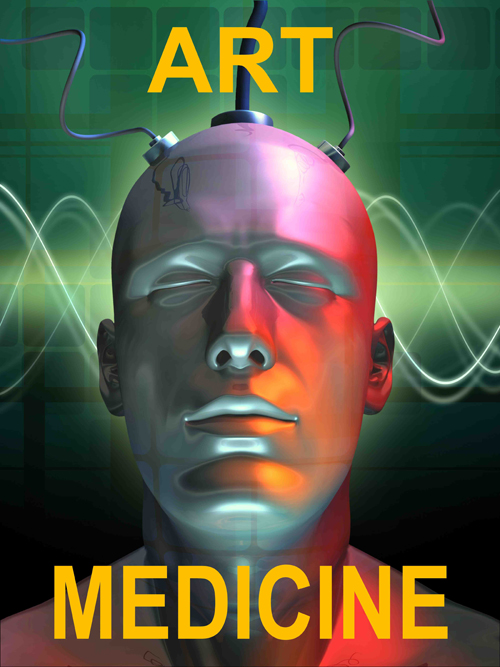
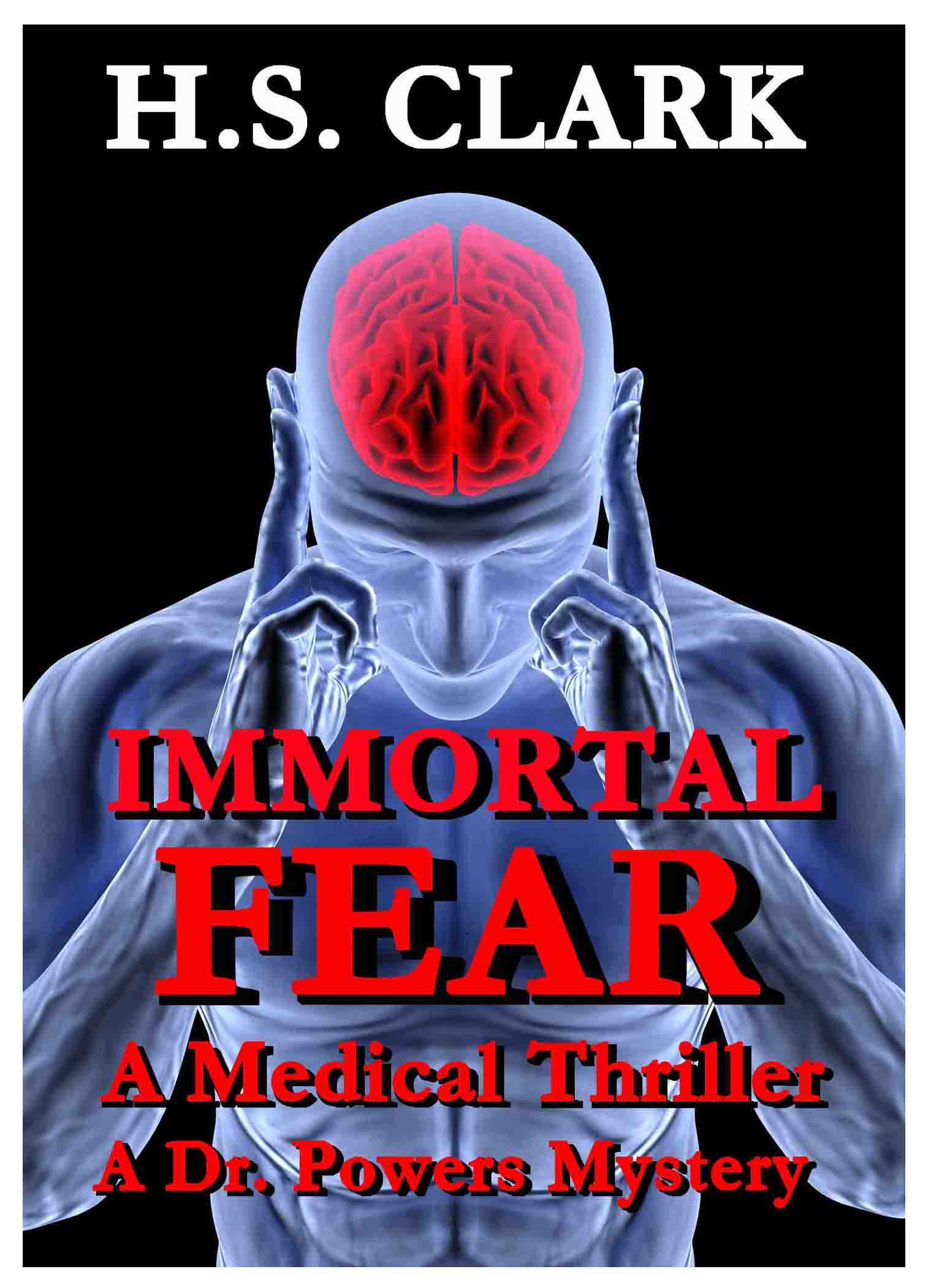



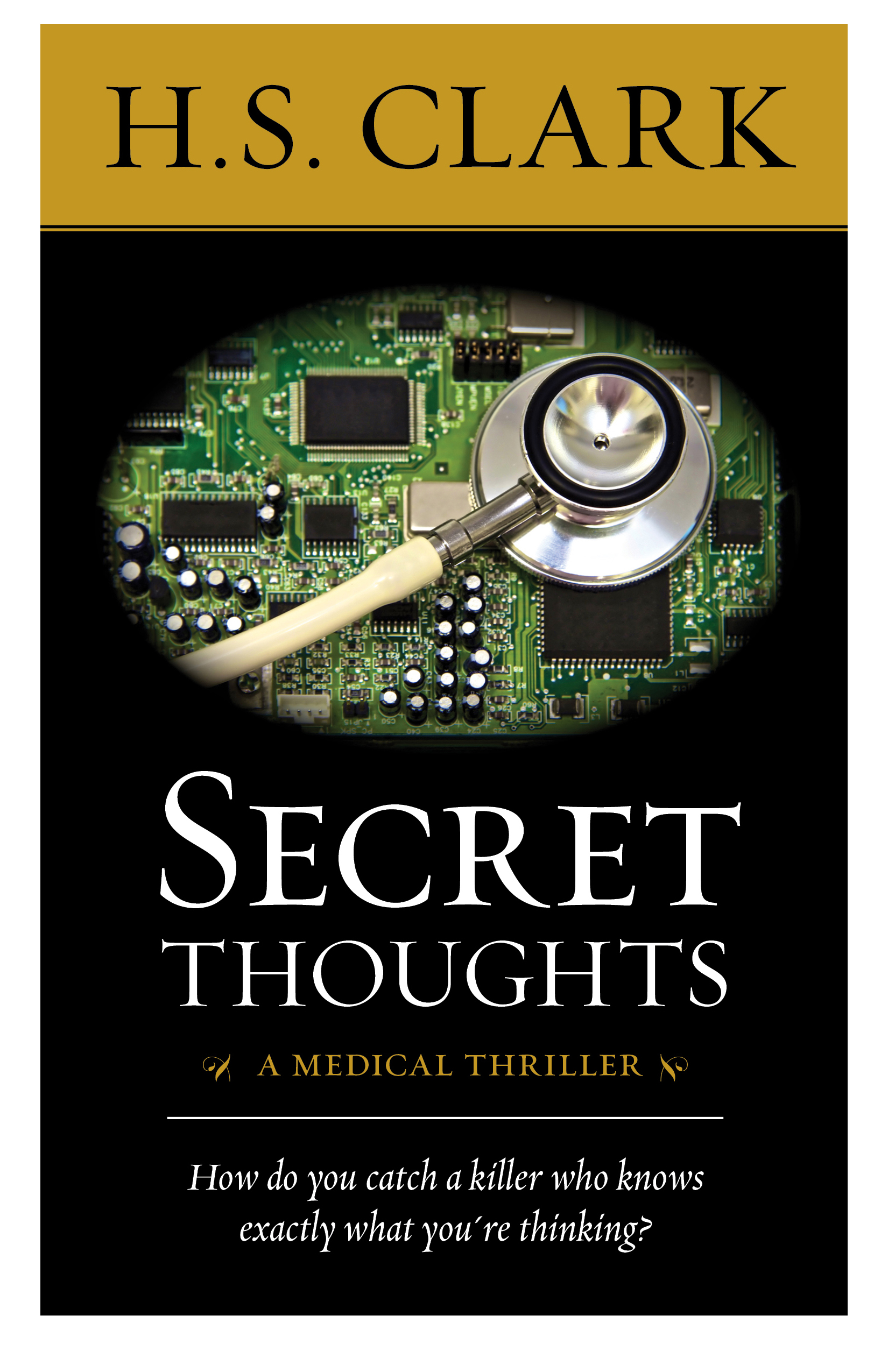


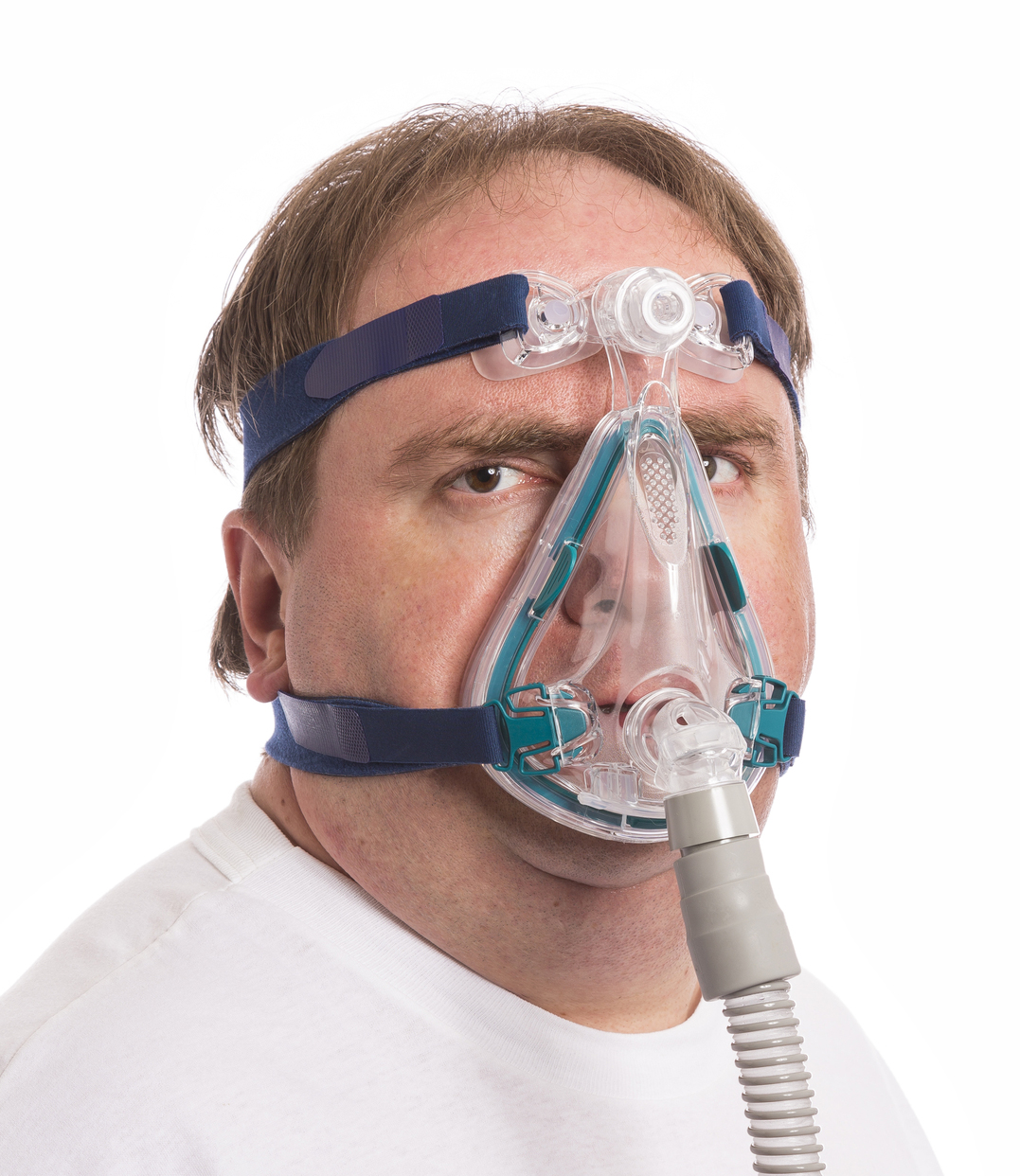
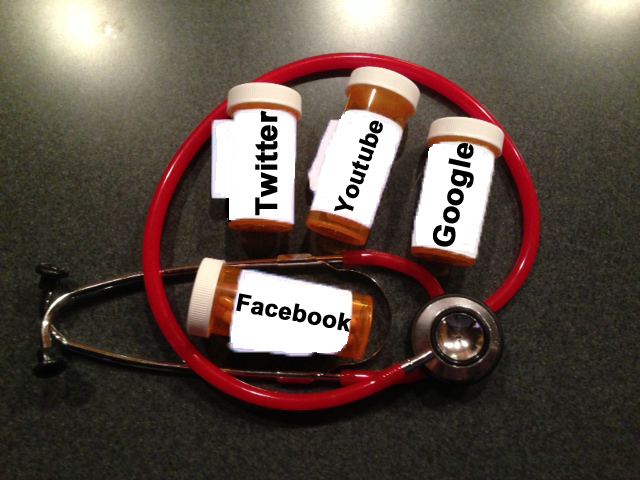
































Anonymous
NEED A DISEASE
Susan C.
NYC, NY